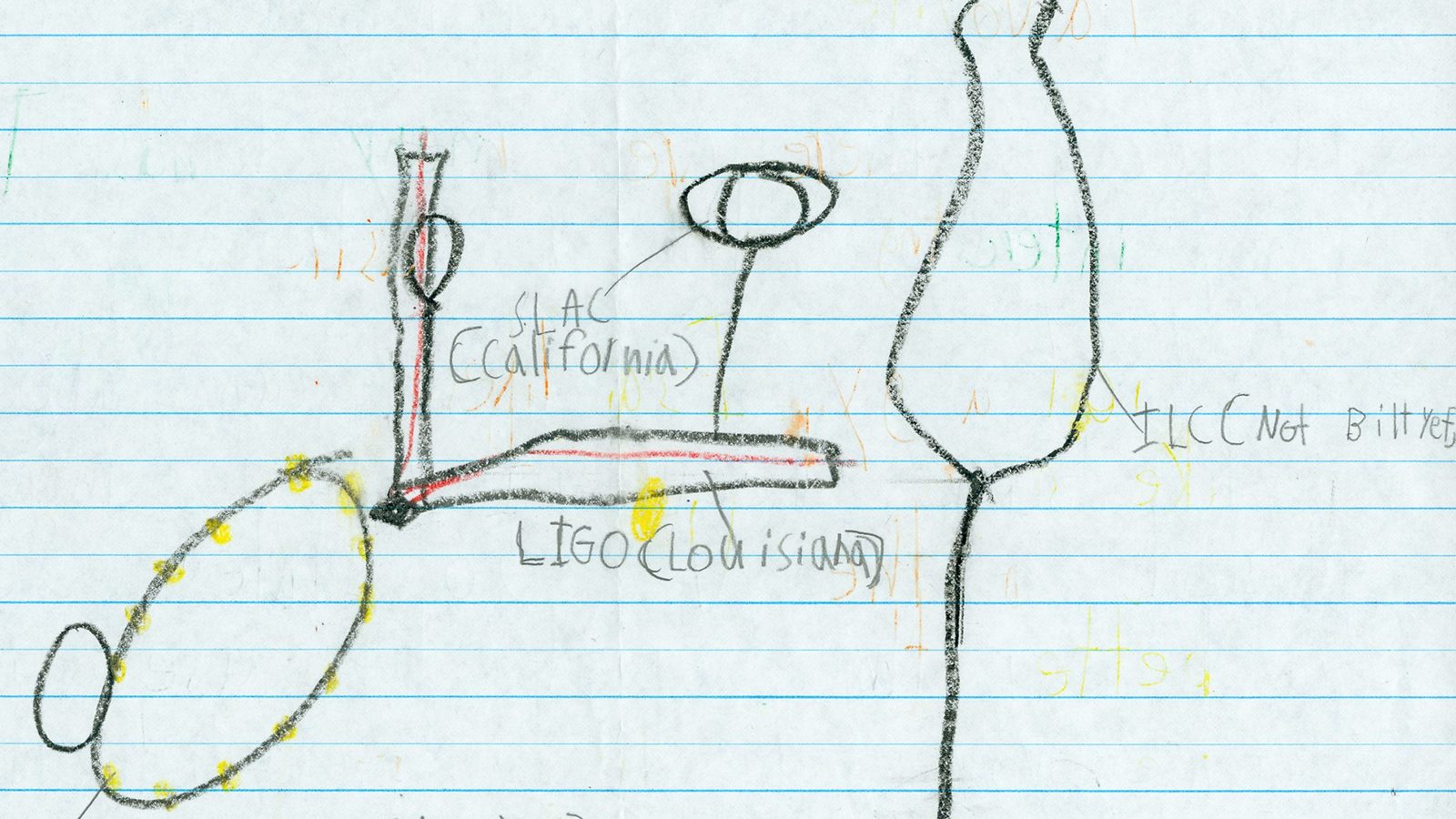Over a half-eaten burrito or a bowl of spaghetti, Sam Ehrenstein ponders the unanswered questions of fundamental physics. Yet Sam is no experimental physicist or postdoc brooding over his datanot yet, anyway.
The seven-year-old son of Physical Review Focus Editor David Ehrenstein, Sam became interested in particle physics by reading science-themed placemats. “When he’s particularly interested in a placemat, he often will use two–one for his plate, and one to read unobstructed,” says David. “We have a lot of placemats.”
Sam displayed his surprisingly complex knowledge to Mrs. Robertson, his first grade teacher, by writing a persuasive essay about his love of science. On the back, he drew pictures of the Stanford Linear Accelerator Center (SLAC), the Laser Interferometer GravitationalWave Observatory (LIGO), the Relativistic Heavy Ion Collider (RHIC), and the International Linear Collider (ILC).
In his first but probably not last interview, Sam admitted to mixing particle physics with astrophysics. “I know LIGO isn’t a particle physics experiment,” he said. “I guess I just got carried away.”
Sam then went on to explain LIGO’s purpose: to detect gravitational waves. “They’re waves that usually come out of space. They come from a bunch of things in space like supernovae but now scientists are trying to see them coming from binary black holes. That’s when two stars are constantly orbiting one another and when they die they become supernovae and then they become black holes and they get closer and closer and finally smash into one another and that releases gravitational waves,” he said. “You wouldn’t know if gravitational waves were coming without LIGO because when they hit something they make it longer and shorter but that’s undetectable except when you have special equipment like LIGO does. It’s fun to learn about and it can also be useful and stuff.”
Sam says he’ll probably be a pilot or an astronomer when he grows up.







